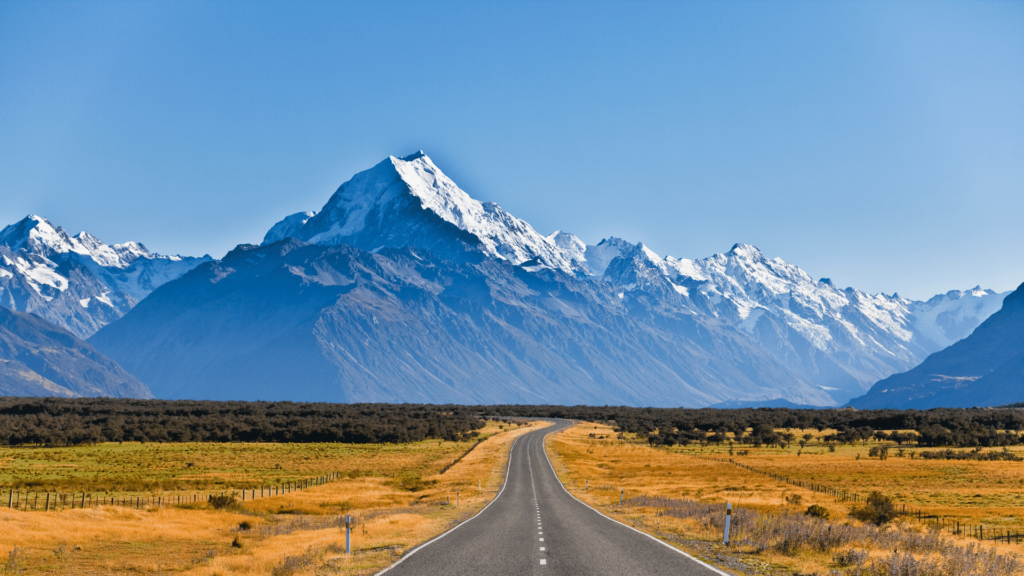Bay of Plenty
The Bay of Plenty region is home to spectacular beaches, juicy kiwifruit and geothermal wonders.
The Bay of Plenty stretches along the pohutukawa tree-studded coast from Waihi Beach to Opotiki and inland as far as the Kaimai Range. This is where New Zealanders have come on holiday for generations, lapping up salt-tinged activities and lashings of sunshine.
Mataatua
Mataatua is a large, fantastically carved 1875 wharenui(meeting house) that is the centrepiece of Te Mānuka Tūtahi marae (traditional meeting place). A visit provides a more intimate experience than the classic tourist cultural show. The two-hour tour is an immersive and personal interaction with the Ngāti Awa, and includes a guided tour, cultural workshops, the ‘Hiko: Legend Carved in Light’ digital experience and a hāngi meal. The one-hour ‘express’ tour is a bullet-point version.
Mauao
The steep slopes of 232m-high Mauao swarm with walkers in the morning, when the Mount’s early risers perform their ritual climb to the summit. The ascent is signposted to take an hour, though you’ll see people striding up it in less than 30 minutes (and often running down). The gentler 3.5km loop around the base should take around 45 minutes.
If you just want a view of Mauao, wander across the causeway to Moturiki (Leisure Island), which peers along Main Beach to the extinct volcanic cone.
Tauranga Art Gallery
The city’s pre-eminent gallery stages challenging exhibitions of thought-provoking contemporary work. The building itself is a former bank, though you’d hardly know it − the atrium can hold massive works, and it’s an altogether excellent space with no obvious compromise.
The General
Winner of outstanding-cafe-of-the-year awards in 2017 and 2019, this pistachio-green cafe runs an all-day menu that blurs the lines between breakfast and lunch – fabulously fresh macro granola bowls through to dal and a tagine. The space is open, bright and inviting, and we could happily just eat from the side-order menu – potato and leek rosti, lemon-seasoned halloumi – and cake selection.
Wai-O-Tapu Thermal Wonderland

The most colourful of the region’s geothermal attractions, Wai-O-Tapu (Sacred Waters) has a variety of features packed into a relatively compact, heavily cratered area, with the highlights being the orange-rimmed, fizzing Champagne Pool and the unearthly lemon-lime-hued Roto Kārikitea. Just down the road (but included in the entry fee) is the Lady Knox Geyser, which erupts (with prompting from an organic soap) punctually at 10.15am and gushes up to 20m – follow the park exodus just before 10am to witness it.
All the headline acts are on the shortest (1.5km) of three interconnecting walking loops, but you’re best to set aside at least a couple of hours for the full 3km track, which leads down to a waterfall spilling into Lake Ngakoro.
Wai-O-Tapu is 27km south of Rotorua along SH5 (towards Taupō), and a further 2km from the marked turn-off.
Waimangu Volcanic Valley
The most visible wound from Mt Tarawera’s 1886 eruption, the Waimangu geothermal area spreads down a valley to Lake Rotomahana (Warm Lake). The experience is quite different from the other ticketed thermal areas as it involves a stroll down the lush, bush-lined valley, with a return by shuttle bus from either the 1.5km, 2.8km or 3.6km point. The 4km trail ends by the lake, where it’s possible to take a 45-minute boat cruise past steaming cliffs.
Highlights include the powder-blue Inferno Crater Lake, which fills and empties every 38 days; Frying Pan Lake, the world’s largest hot spring; and Warbrick Terrace, where the valley’s colours are at their most intense. Waimangu (Black Water) refers to the dark water that once shot out of the world’s mightiest geyser, reaching heights of up to 400m during its eruptions from 1900 to 1904.
Waimangu is 25 minutes’ drive south of Rotorua, 6km off SH5 (towards Taupō) at a marked turn-off.
Te Puia
Te Puia dials up the heat on Māoritanga (things Māori) with explosive performances from both its cultural troupe and Pōhutu (Big Splash), its famous geyser that erupts around 20 times a day, spurting hot water up to 30m skyward. It erupts in tandem with the adjoining Prince of Wales’ Feathers geyser. Also here is a kiwi conservation centre and the New Zealand Māori Arts and Crafts Institute, where you can watch students at work.
Daytime visits (Te Rā) include an informative guided tour of the entire complex (departing on the hour), which also features a wharenui (carved meeting house), a re-created precolonial village (Te Puia is on the site of a Māori Village that was inhabited for 600 years), the kiwi enclosure and a large chunk of the Whakarewarewa thermal zone. After the tour you’re welcome to wander around at your leisure. It’s well worth paying extra for the cultural performance (10.15am, 12.15pm and 3.15pm), incorporating a traditional welcome into the wharenui and a 45-minute kapa haka(traditional song and dance) concert. The three-hour Te Pō (night) experience starts at 6pm and includes a cultural show and a hāngi meal, followed by a tour through the thermal zone in a people mover.
The Arts and Crafts Institute houses the national carving and weaving schools, and you’re free to watch the bone and wood carving and the flax weaving.

